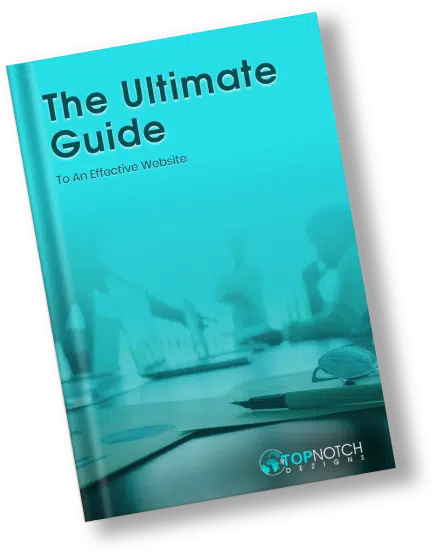Web design trends come and go, although some stick around for longer than others. Some pretty much fall off the radar owing to new tools and technologies, while others barely manage to stay relevant. For example, while page counters, popup windows, and scrolling marquees are near-dead and buried, several relatively modern trends are already past their prime, and these are the ones web designers would like to say goodbye to in the near future. Here, you get to learn of the top outdated web design trends and understand why they need to leave the building.
Table Of Contents
1. Flat Design
Not very long back, flat designs were the talk of the town and found a spot at the table of hot trends in web design. Several experts felt this design concept was sophisticated, beautiful, and simple, but from where the industry stands today, one can’t help but wonder if it was all or any of these. In its favor, flat design made way for minimizing by stripping things down and focusing on usability instead of simulating familiar user experiences. Additionally, websites with flat designs tend to look cool and are pretty fast.
While flat designs have their share of advantages, the concept comes with various usability challenges. People who have been following web design trends might remember that the Windows 8 Metro UI was flatter than its predecessors. The design did not pay attention to the context and signals that users needed to interact with the web intuitively.
Then, Google introduced Material Design which put some motion back to the screen. This framework came with the required guidelines and tools, and while it was effective and intuitive, it limited some essential fundamentals like expression and creativity.
Looking to Grow Your eCommerce Revenue?Request a Quote
2. Sliders and Carousels
Multiple reasons put sliders and carousels on this list. If it is not the bloodless design move, it has to be the conversion and usability. From a user’s perspective, auto-forwarding sliders have to be among the worst elements you can incorporate into your website. Look at it this way, if users don’t like what they see, they will probably leave instead of waiting to see if the next slide is as boring as the first. On the other hand, what if a viewer is still viewing a slide and you just take it away?
Since you invest in a website for your target audience, it makes sense to give its visitors time to digest what they like and the control to move to the next item. You should make sure your website is conversion-oriented because all the elements of your website need to encourage users to do what you want them to and anything that hinders this should no longer be a part of your web design strategy.
3. Distracting or Complex Animations
Animation continues to find favor with many web designers even now, mainly because they can use this powerful tool to reinforce concepts and enhance a website’s usability. However, it’s common for some to go over the top. Consider this – most kids are attracted to new toys. They for the shiniest and coolest ones, and, in some cases, overuse and abuse them. Only, this behavior does not limit to children.
In the world of web design, it’s common for some to grab trends right off the table, while they’re hot, and use them inappropriately. Sure, animation can be a great tool but if you overdo it, it becomes a distraction and joins the list of elements that lead to your website’s undoing.
Excessive use of motion on a website is among the trends that are likely to die soon. Designers should make sure they limit the use of animation because overuse tends to come with detrimental effects. It is a good idea to validate all the motion that shows up on your website and ensure that all the animation works positively towards the goal of the website. If you can’t moderate the motion, eliminate it altogether.
4. Popups
Even though Google said it would impose penalties on websites that have intrusive popups way back in 2016, one can continue to find them on several websites. However, this is one web design trend that is bound to push your website’s visitors away. After all, when modern-day web users are going through your website to look for information, the last thing they want is an interruption in the form of a popup.
Newsletter popups that require visitors to provide some information to gain access to the content they’re looking for are the worst offenders. This is because users can’t even close them to proceed, which can lead them to simply leave the website in question. If you do wish to use a newsletter popup, incorporating it within the browsing experience is the ideal way to go.
5. Infinite Scrolling
While a number of web designers embraced infinite scrolling when it first started doing rounds, know that this is among the worst web design concepts to choose for your website. For starters, infinitive scrolling can present problems for people with disabilities who use assistive technology to access sidebars, footers, and other elements. By alienating these users, you stand the risk of violating Web Content Accessibility Guidelines (WCAG).
Another big drawback of infinite scrolling is that it can hamper your search engine optimization (SEO) efforts. Sure, infinite scrolling can help improve on page time. However, it’s common for search engine crawlers not to crawl all the way down pages that have infinite scrolling, which means that bots could end up missing a significant portion of your website’s content. Consequently, ranking well for the keywords you target can become challenging.
Not being able to add a footer is another big drawback in going the infinite scrolling way. This is because optimizing your footer enables you to give users access to important information and links, and it also plays a role in improving search engine ranking.
Looking to Boost Your Business Online?Request a Quote
6. Low-Quality Stock Images
If you look at current website design trends, you’ll notice that the top web designers emphasize using unique images. Consequently, it’s best that you avoid using run-of-the-mill stock images. If you have images that represent your brand and its offerings, you should focus on using them before turning to stock images. This is because using your own images gives your website a more personal feel as they’re actually about your business.
Using low-quality stock images or ones that have been doing rounds for years can give your target audience the impression that you did not put too much effort into designing your website, which can then lead to them having a similar view of your business.
If you do need to use stock images, it’s best to steer clear of platforms that offer them for free because there’s no telling how many people might have used the images you select before you. Instead, turn to platforms that offer high-quality images instead. Some of your options include:
- Shutterstock
- Depositphotos
- Jumpstory
- iStock
- Adobe Stock
7. Scroll-Jacking
Can you think of being in a situation where you have no control? Well, is the situation pleasing? Human beings like being in control, and this is particularly true when we deal with machines. Scrolljacking, scroll-jacking, or scroll hijacking is like a supervisor who is always on your shoulder. This can be annoying and patronizing.
If you have researched a product in the past and had no option but to go through explanation slides that told you why you needed the product, you’ve been a scroll jacking victim. This presents a serious challenge to the usability of a website and can work rather negatively.
A website and other digital channels need to be intuitive. Your website should be open to exploration by users, and it should not force them to view specific content or perform a particular action. If you look at different scroll jacking examples, you’ll notice they tend to restrict the freedom users need to view what they want and work on the assumption that one size fits all. Of all the outdated website design trends listed on this page, this one can leave with immediate effect.
8. Sidebars
Purposeless sidebars have refused to completely fade away. They have been hanging on a string for several years and most web design experts agree that they need to go. The sidebar content does one thing very well, which is to distract users from what you want them to do on a particular web page. In addition to being distracting:
- A sidebar can lead to unnecessary friction and hamper the user experience.
- It can make a page look cluttered.
- It does not align with the minimalist design formula.
9. Multiple Fonts
One of the key elements of modern-day web design is consistency because it plays an important role in delivering a good user experience. Using multiple fonts throughout a website or a web page can have a negative effect on its aesthetics and it can distract users from performing desired actions. Besides, it can leave a poor impression of your website’s overall appeal.
Ideally, you should select no more than one or two fonts for your entire website, as this paves the way for uniformity. Even if you feel that using multiple fonts can showcase a sense of creativity, remember that too many cooks tend to spoil the broth.
10. Non-Standard Header Icons
Your website’s header is among its most useful elements and overly experimenting with this component might cause problems for users who rely on predictable layouts and those who are not tech-savvy. Unfortunately, a number of websites still go overboard on this front and end up causing more harm than good. While some web designers feel that non-standard header icons are good for establishing unique styles, they need to account for the fact that these icons tend to falter when it comes to delivering a great user experience for all the visitors of a website.
Use of the hamburger icon or button, with the standard triple bar or trigram symbol, is common in mobile and responsive websites that are trying to make the most of small screen sizes. However, web designers who continue using this button on desktop designs need to understand that they are taking minimalism one step too far. After all, hiding a website’s menu does not make it more usable. Instead, it forces visitors to go through another step to access the menu and creates unnecessary friction.
Looking To Boost Your eCommerce Business Online?Request a Quote
11. Indiscriminate Use of Videos
Adding huge background videos was all the rage until sometime back, but good web designers have realized that their indiscriminate use can have a negative impact. After all, while a huge video can increase a page’s loading time, it can distract users from the call to action (CTA) and have an adverse effect on conversion rates. You may still use a video on your website’s homepage, provided it’s a small file and it plays in the background, ensuring that the text above it is clear.
Getting videos to autoplay is another outdated website design trend that has pretty much fallen off the radar, so it’s best to steer clear of this path. While you might think that your website’s visitors might find this feature convenient, most web users view it as an imposition that hampers their experience. Consequently, if you’re using videos on your website, you should ideally give users the freedom to decide if they want to watch them.
Conclusion
Some of the outdated web design trends listed on this page were big when they first appeared on the scene. However, time has passed and technologies have evolved. Some of these trends seem senseless and distracting now, to say the least, and you can find them across almost all bad website design examples.
One easy way to determine which trends are in and which are on their way out is to look at the portfolio of any good web design company. As time progresses, web designers look forward to making the most of existing trends and wait for others to arrive. Their use, though, will completely depend on results which is why trends that don’t deliver often sink like a stone.








